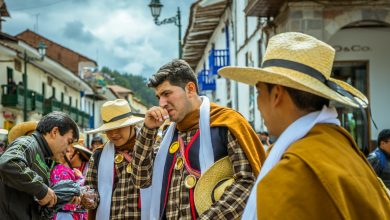Are These The Textures of Peru?

Gathering textures in what is for me a far-away place, Cuzco, leads me to wonder what is being represented in the images. Do textures stand for themselves as abstract, conceptual forms – separate of place – or do they somehow characterize the textural landscape of the area? Is a “feel” of Peru being transmitted?
Texture hunting began a few years ago as a mental exercise to sharpen my eyes and get me looking differently at the world. It allows the mundane to be studied as something new. The automatically eye-catching, usually active elements (people, animals, bright flowers) can be resisted with a textural mindset. It allows a very different, almost non-human aesthetic to become the object of desire.
In a way, textures resist the photographic compulsion, which is a journey of the eyes for an audience. Instead, like a good synesthetic experience, they switch the visual for the tactile. Just like words attempt to blossom into visions and instill feelings in a reader’s mind – to allow them to experience pits, roughness, feathery softness, or the wet and slick – textures perform a mental shift.
Algae layered on conglomerate. Slippery green moss. Mown grass. There are certain surfaces, magnifications, and subjects that feel global. They feel as if they could be found anywhere. Mud, gravel, sand, and soil. Sunsets race around the earth. Clouds traverse the planet. By capturing them, do these representations represent any place at all? Another issue emerges if those types of images are not included. By ignoring them to portray only the unique, does that exoticize and misrepresent an area? Or could exclusion offer a clearer, quicker, not quite so cluttered understanding of difference?
A possible solution might be found in understanding a deception that already exists. A texture – the photo of a texture anyway – presents an illusion. It separates a patch from the world around it and brings it close to an abstracted, conceptual world. But the landscape is continuous. In any landscape there is, as anth-philosopher Tim Ingold* so nicely puts it, “a continuum of difference.” Herein lies a potential solution. Textures may be able to bring about a sense of particularity if they can be assembled together and displayed as a larger unit.

Each can stand on its own but also connect to neighbors and the larger set, communicating something of the breadth of similarity and difference in an area.
*Ingold, Tim. “The Man in the Machine and the Self-Builder.” Interdisciplinary Science Reviews 35, no. 3–4 (2010): 353–364.































